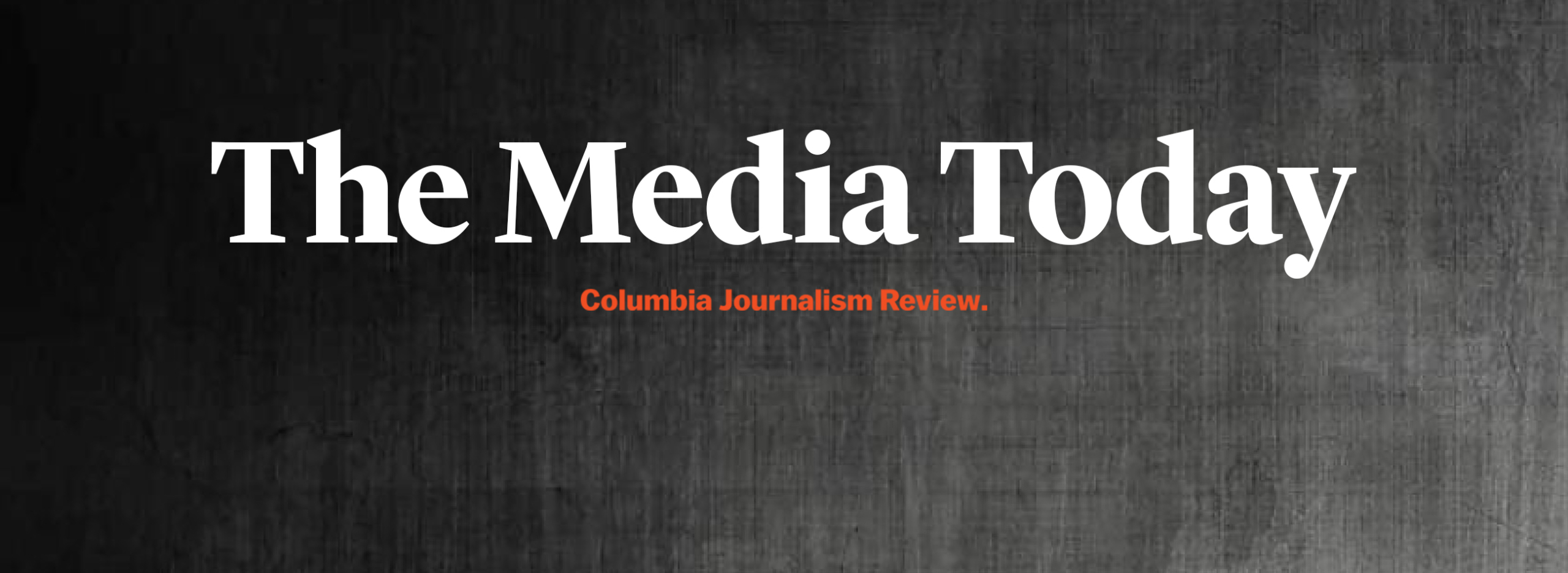Pete Buttigieg is no longer flavor of the month. In the eight months since I (and he) used those words, the presidential campaign of the 37-year-old mayor of South Bend, Indiana, has demonstrated real staying power; last month, he jumped to the top of the field in Iowa, the media-drenched first-nominating state. In April, I wrote that an early, fluffy flurry of coverage had helped Buttigieg to stand out from the crowded Democratic field, despite his thin track record and self-professed lightness on policy specifics. That, I wrote, did not reflect well on the press and its predilections. Buttigieg’s “overt, cultured intellectualism makes him an obvious foil for Trump, without forcing us to think too hard about the structural forces that put Trump in the White House.” The bulk of Buttigieg coverage, I wrote, “contrived to turn him into a Thing, then marvel that he’s somehow become a Thing, with questions coming later.”
Now that Buttigieg is less a thinking man’s curiosity and more a bona fide frontrunner, questions have come. Recently, after the New York Times and ProPublica outlined the consulting firm McKinsey’s role in executing the Trump administration’s immigration agenda, many observers, including the editorial board of the Times, piled pressure on Buttigieg to disclose details of his past work for the company. Buttigieg said he’d need McKinsey to release him from nondisclosure obligations first; last week, it agreed to do so, and Buttigieg named his old clients, which included Blue Cross Blue Shield, Best Buy, and various federal departments and agencies. Also last week, Buttigieg identified his top donors, and opened his fundraisers to the press, after his campaign’s finances came under scrutiny. (His supporters’ dance moves, to the song “High Hopes,” by Panic! At The Disco, also found widespread attention, though it might be a stretch to call this “scrutiny.”)
ICYMI: A list of media organizations that experienced layoffs in 2019
Yesterday, we saw another concentrated flurry of Buttigieg coverage, including long, in-depth features in the New Yorker and the Washington Post, and shorter pieces in the Times Magazine and The Atlantic, and on CNN’s website. (The New Yorker headlined its profile “High Hopes,” and asked Buttigieg about the dancing; “In an age of exclusion, and amid a crisis of belonging,” he replied, “I actually believe that there’s a certain amount of moral lift to be found in goofy joy.”)
The deeper pieces hit some of the same West Wing-ish notes as those that came out in the spring. (He speaks Norwegian, we know.) On the whole, however, they cast a useful critical eye over Buttigieg and his now-elevated prospects. Benjamin Wallace-Wells, who wrote the New Yorker profile, looked skeptically at the contours of Buttigieg’s moderate positioning, dwelling at length on his “dismal” polling among Black voters, and travails on issues related to race. The Post piece, by Robert Samuels, focused solely on Buttigieg’s “years-long, and often clumsy, quest to understand the black experience.” Samuels smartly inverted the baubles that adorned much early Buttigieg coverage. Henry Davis, Jr., a South Bend city councilman, wondered to Samuels how “a man who was so intellectually curious that he learned Norwegian to better understand a novel, who went out of his way to learn an Aboriginal wooden instrument called the didgeridoo, could be so unaware about segregation patterns in his own city.”
If serious scrutiny of Buttigieg has come belatedly to the mainstream press, left-wing media and social media have been animated about his candidacy—and its missteps on race, in particular—for months. But that discussion, too, seems to have intensified of late. Last month, The Intercept dug into endorsements of Buttigieg’s Douglass Plan for Black America; it found that one—from Johnnie Cordero, the chair of the South Carolina Democrats’ Black Caucus—had to be removed because Cordero never expressed support for the plan or Buttigieg. Also last month, old footage circulated of Buttigieg saying that many children in “lower-income, minority neighborhoods” lack “someone who they know personally who testifies to the value of education.” Michael Harriot, of The Root, wrote in response that Buttigieg is “a lying motherfucker.” Afterward, Buttigieg called Harriot. “Mostly, he just wanted to listen,” Harriot wrote.
The three shorter pieces yesterday—from the Times Magazine, The Atlantic, and CNN—all were attempts to explain left-wing online loathing of Buttigieg. (The Daily Beast’s Maxwell Tani quipped, on Twitter, “Can I get a dial-in to the morning edit call everyone is on together?”) Race- and policy-related objections featured, but cultural factors were given equal weight, if not more. Charles Homans wrote in the Times Magazine that “the Buttigieg backlash, just like this spring’s first flush of Buttigieg mania, has a dorm-room atmosphere about it,” and that it speaks to “the vast gulf that lies between the internet and the Iowa caucuses.” Derek Thompson wrote in The Atlantic that young people’s “sulfuric hate” of Buttigieg is “confusing, for several reasons.” He concluded that they hate Buttigieg because he’s not a socialist, because they think he’s a phony, and because they’re projecting “to exorcise their own anxieties about success and increase their in-group status.” (In other words, “Buttigieg is the guy they hated in college.”)
Cultural analysis can be instructive, of course. Still, the proliferation and framing of such takes arguably speak to ongoing problems with coverage of politics, in general, and Buttigieg, in particular—that it’s too focused on personality, and that substantive differences can never be the beginning and end of the story. Yesterday, Sarah Jones, of New York magazine, addressed that idea on Twitter. “I don’t think it’s actually very difficult to understand the left case against Buttigieg,” she wrote. “That case does not rest on ‘left Twitter’ or on outrage churn but on legible political differences that separate leftists from a more moderate candidate like Buttigieg.”
In the spring, Buttigieg told Jones’s New York colleague Olivia Nuzzi that his campaign would grow in substance to outlive its “flavor-of-the-month period.” Since then, he has made commitments in numerous areas, including his Douglass Plan; even so, Wallace-Wells wrote in his New Yorker profile that, on the campaign trail, Buttigieg still does not “delve deeply into policy detail,” and that one must “squint” to start to see “the outlines of a Buttigieg Presidency.” The press helped make Buttigieg a Thing, but it still hasn’t fully figured out what that Thing is made of.
Below, more on Pete Buttigieg and 2020:
- The High Hopes Express: In the spring, Nuzzi told CNN’s Brian Stelter that a big reason for the outsized media focus on Buttigieg’s campaign was the liberal access it offered reporters. Buttigieg has continued to be open; in recent months, he’s allowed journalists rolling, on-the-record access to his campaign bus, an initiative modeled on John McCain’s Straight Talk Express that David Foster Wallace famously rode in 2000. Per Wallace-Wells, “Buttigieg is a less chummy presence than McCain.”
- Walking through doors: Samuels, of the Post, writes that when Buttigieg was in college, he took an internship at NBC5, a Chicago TV station. (Renee Ferguson, a Black reporter at the station, recalls one of Buttigieg’s professors telling her, “He wants to be president one day, but he wants to understand how the media works.”) Ferguson told Samuels that Buttigieg helped her secure Emmy-winning footage of a sex offender working at a day care. A security guard let Buttigieg enter—after turning away Ferguson and another Black colleague. Ferguson says Buttigieg doubted that white privilege was at play.
- Double standards?: Two weeks ago, after Kamala Harris dropped out of the presidential race, critics decried a perceived double standard between coverage of her campaign, and of those of white, male rivals. In March, the Post’s Margaret Sullivan warned the media not to make a white male nominee “a self-fulfilling prophecy,” naming Buttigieg and other Democratic “B-Boys.”
Other notable stories:
- The Times dedicated an episode of its flagship podcast, The Daily, to “The Afghanistan Papers,” a damning secret history of the Afghan War that was exposed by the Times’s top rival, the Post, last week. The Daily framed its follow-up around the memories of Thomas Gibbons-Neff, a Times reporter who served in Afghanistan as a Marine. In general, the New Republic’s Alex Shephard argued on Friday, the US media has paid inadequate attention to the Post’s reporting. The breathless Trump news cycle hasn’t helped, Shephard writes, but another factor “is that everyone is to blame, which means no one has much of an interest in keeping the story alive.” The press “loves the idea of bipartisan cooperation,” but “doesn’t really know what to do with bipartisan failure.”
- According to the Post’s Fact Checker team, Trump has blown past 15,000 false or misleading claims in office—just eight months after breaching the 10,000 mark. October and November were Trump’s second and third most dishonest months as president, topped only by October 2018, when he blitzed the country ahead of the midterms; the Ukraine scandal and impeachment inquiry, of course, have been the key drivers of his recent acceleration. (ICYMI: In the summer, Ana Marie Cox, CJR’s public editor for the Post, argued that the paper’s efforts to fact-check the president are “futile.”)
- CJR’s Savannah Jacobson follows a fight for information at the Bergen Record, in New Jersey, where reporters’ requests for documents about a deadly adenovirus outbreak have repeatedly been rebuffed by state health officials. In October 2018, New Jersey’s then-health commissioner wrote an editorial for the Record, in which he chided the paper for pursuing documents, and called on reporters to respect the families of the deceased.
- Nieman Lab is out with its annual list of predictions for journalism in the year to come. Among them, Doris Truong, of Poynter, reckons 2020 will be a year of “radical salary transparency” as journalists realize that secrecy around their pay is depressing it. Rachel Davis Mersey, of Northwestern University, thinks local TV news will start to decline. And the Telegraph’s Francesco Zaffarano hopes we’ll use TikTok without patronizing the kids.
- Vox Media will terminate hundreds of freelance contributors—primarily at its sports site SB Nation—in order to comply with a new law in California that aims to scale back the gig economy; per CNBC’s Ari Levy and Alex Sherman, some of those affected may be offered staff jobs. ICYMI, Tony Biasotti recapped the California freelance law for CJR.
- According to Access Now, an advocacy group, the internet shutdown in Kashmir is now the longest ever recorded in a democracy; today marks its 135th day. When India cut the region off, its 7 million people “abruptly returned to a pre-Internet era,” the Post reports. “Journalists rely on a government-run center with just 10 computers to file their stories.”
- Since internal papers about China’s mass detention of Muslims leaked to the Times and other outlets, the regional government in Xinjiang has tightened controls on information, including by destroying data and documents, the AP reports. China also said Mesut Özil, a leading German soccer player who criticized the persecution of Chinese Muslims, had been “deceived by fake news.” (Özil’s club, Arsenal, distanced itself from his remarks.)
- In the UK, Boris Johnson, the newly reelected prime minister, is threatening to punish the BBC for its critical coverage during the campaign. His government is weighing measures that would undercut the broadcaster’s public funding model, and is boycotting its flagship radio news show, Today. The opposition Labour Party is also livid at the BBC.
- And Peter Schjeldahl, art critic at the New Yorker, explores “the art of dying” after learning that he has “rampant” lung cancer. Death, he writes, “is like painting rather than like sculpture, because it’s seen from only one side.”
ICYMI: Who didn’t kill Jimmy Hoffa
Jon Allsop is a freelance journalist whose work has appeared in the New York Review of Books, Foreign Policy, and The Nation, among other outlets. He writes CJR’s newsletter The Media Today. Find him on Twitter @Jon_Allsop.

